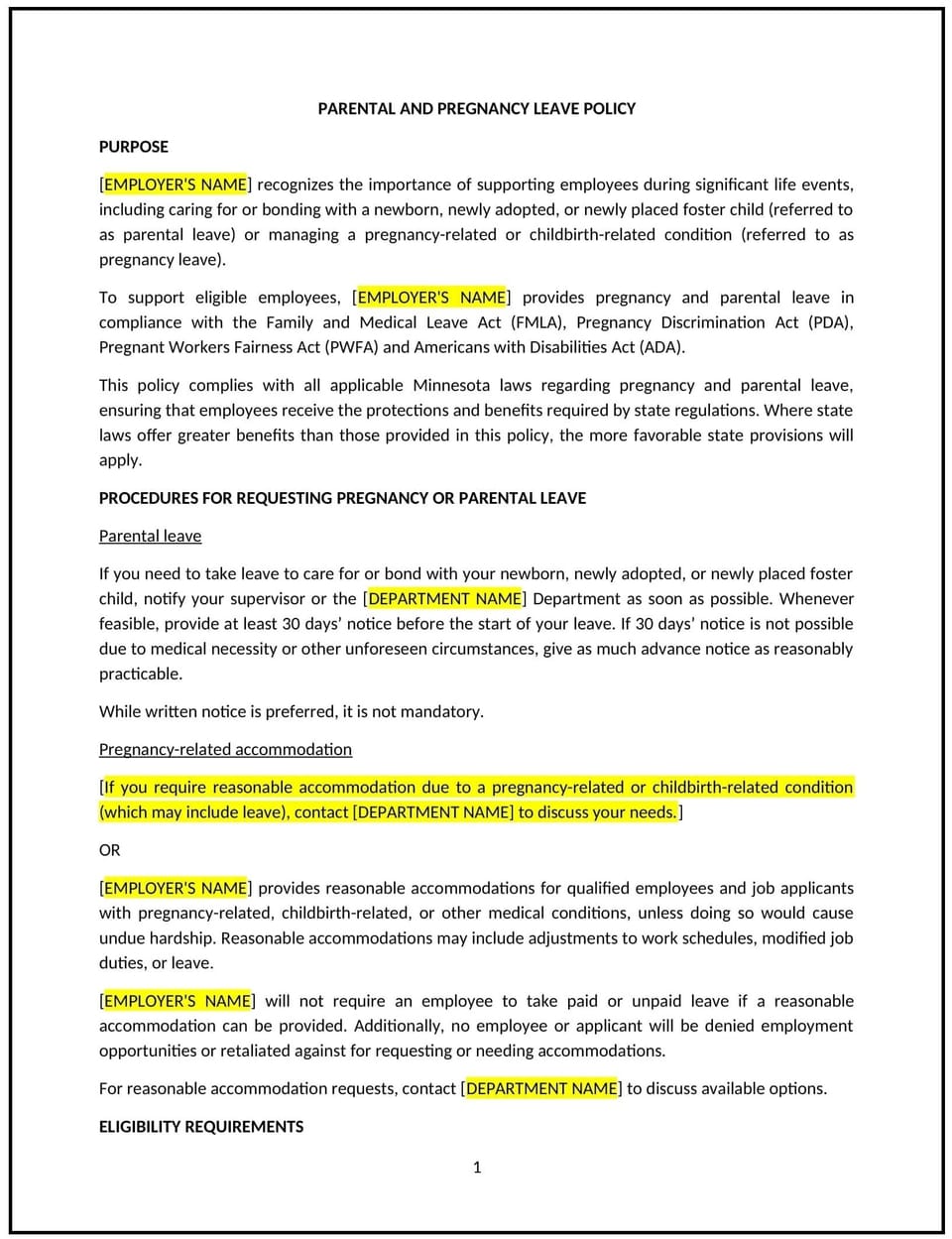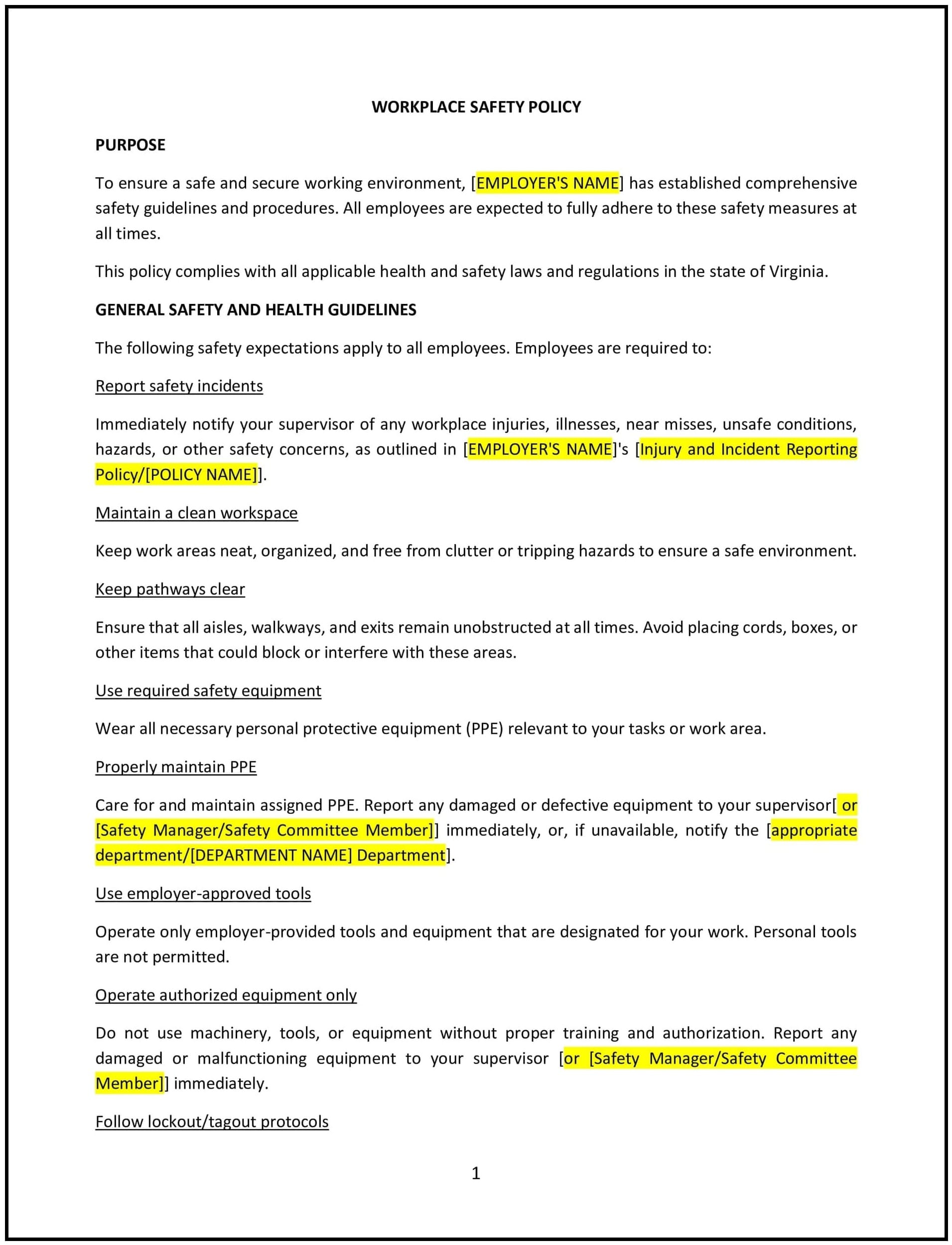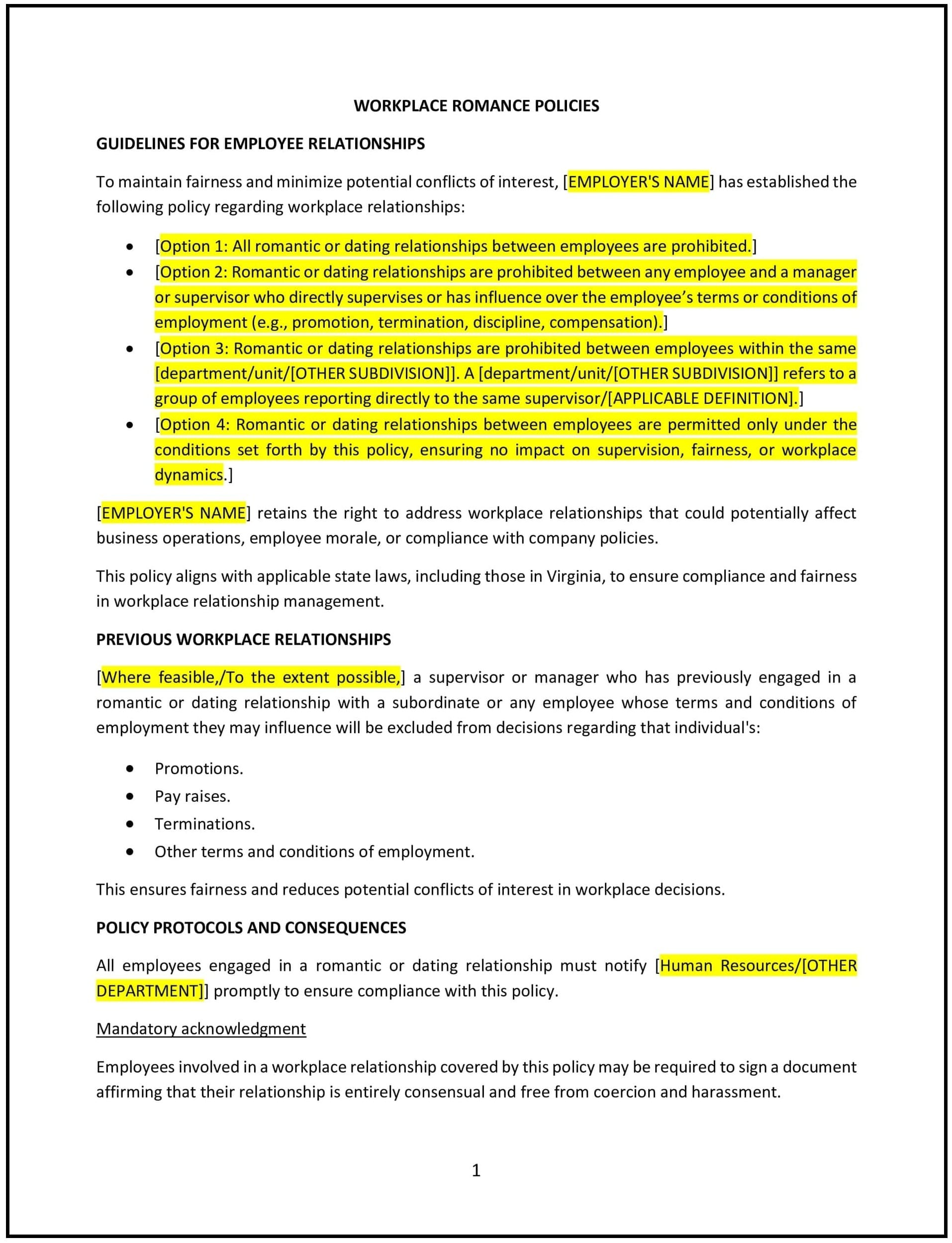Parental and pregnancy leave policy (Minnesota): Free template

Parental and pregnancy leave policy (Minnesota)
This parental and pregnancy leave policy is designed to support employees in Minnesota who are expecting a child or adopting a child, as well as those needing time off for pregnancy-related conditions. It outlines the company’s approach to providing leave for childbirth, adoption, and pregnancy, ensuring employees have the support they need to balance family responsibilities with work.
By implementing this policy, businesses can foster a supportive work environment that values work-life balance, promotes employee well-being, and supports compliance with both state and federal family leave laws.
How to use this parental and pregnancy leave policy (Minnesota)
- Define eligibility: Specify which employees are eligible for parental and pregnancy leave, such as full-time employees who have worked a certain number of hours or months with the company.
- Outline leave entitlements: Clearly state the amount of leave available for pregnancy, childbirth, and adoption, including any paid or unpaid leave options, and the process for requesting leave.
- Address job protection: Ensure employees understand that their job will be protected during their leave, and outline the process for returning to work once the leave is complete.
- Clarify benefits during leave: Specify how employee benefits (e.g., health insurance, retirement contributions) will be handled during the leave period, including whether employees are responsible for paying their portion of premiums.
- Set procedures for requesting leave: Provide a clear process for requesting parental or pregnancy leave, including the timeline for notifying the employer, documentation required (e.g., medical certifications or adoption papers), and who to contact within HR.
- Address shared leave options: If applicable, clarify whether employees can use paid time off (PTO) or other leave options, such as sick leave or vacation days, during their parental leave.
- Provide information on returning to work: Outline the expectations for employees upon returning to work, including how to communicate with managers and HR about their transition back to work after leave.
Benefits of using a parental and pregnancy leave policy (Minnesota)
Implementing this policy provides several advantages for Minnesota businesses:
- Supports employee well-being: Offering parental and pregnancy leave demonstrates the company’s commitment to employee health and well-being, ensuring that employees can care for their families without the fear of job loss or financial hardship.
- Enhances employee retention: By providing generous leave benefits, businesses can improve employee loyalty and retention, as employees are more likely to stay with a company that supports their work-life balance.
- Promotes a positive work environment: A supportive leave policy fosters a culture of trust and inclusivity, where employees feel valued and supported, leading to higher morale and increased productivity.
- Reduces turnover costs: Businesses that offer parental leave can reduce turnover costs, as employees are less likely to leave the company when they feel supported during significant life events.
- Reflects Minnesota-specific considerations: The policy can be tailored to comply with Minnesota’s specific laws and regulations regarding family leave, ensuring that it meets both state and federal requirements.
Tips for using this parental and pregnancy leave policy (Minnesota)
- Communicate clearly: Ensure all employees are aware of the parental and pregnancy leave policy, including eligibility requirements, the leave request process, and how benefits will be handled during the leave period.
- Plan in advance: Encourage employees to request parental leave as early as possible to allow for adequate planning and coverage during their absence.
- Be flexible: Be mindful of employees' needs during the leave period and offer flexible return-to-work options, such as phased returns, remote work, or flexible hours when possible.
- Maintain confidentiality: Handle all leave requests confidentially, ensuring that employees’ personal and medical information is protected.
- Review regularly: Periodically review the policy to ensure it remains aligned with changes in state and federal law and meets the evolving needs of employees.
Q: Who is eligible for parental and pregnancy leave?
A: Businesses should specify the eligibility criteria, which may include full-time employees who have worked for the company for a specified number of hours or months. The policy may also outline whether part-time or temporary employees are eligible.
Q: How much leave is available for pregnancy, childbirth, or adoption?
A: The amount of leave will depend on state and federal laws, as well as the company’s policy. Typically, this leave can range from several weeks to several months, with details about paid and unpaid options outlined in the policy.
Q: Is parental leave paid or unpaid?
A: The policy should specify whether parental leave is paid or unpaid. Some businesses may offer paid leave for a certain period, while others may provide unpaid leave or allow employees to use PTO or vacation time.
Q: How should employees request parental or pregnancy leave?
A: Employees should notify their employer as early as possible, providing the necessary documentation (e.g., medical certification or adoption papers). The policy should outline the timeline for requesting leave and who to contact within HR.
Q: Will my job be protected during pregnancy or parental leave?
A: Yes, employees should be assured that their job will be protected during their leave, and they will be reinstated to their original position (or an equivalent one) upon their return, as required by state and federal law.
Q: What happens to employee benefits during parental or pregnancy leave?
A: The policy should clarify how benefits, such as health insurance, will be handled during the leave. Typically, employees are required to continue paying their portion of premiums if they want to maintain coverage.
Q: Can employees take parental leave intermittently?
A: Depending on the nature of the leave and company policies, businesses may allow employees to take parental leave intermittently or on a reduced schedule. The policy should specify how this process works.
Q: How should employees transition back to work after parental leave?
A: Employees should communicate with their manager and HR about their return-to-work date and any needed adjustments to their schedule or work duties. The company should provide a smooth transition back into the workplace.
Q: How often should this policy be reviewed?
A: The policy should be reviewed at least annually or whenever there are changes in relevant state or federal family leave laws, or when the company’s leave practices or employee needs change.
This article contains general legal information and does not contain legal advice. Cobrief is not a law firm or a substitute for an attorney or law firm. The law is complex and changes often. For legal advice, please ask a lawyer.


